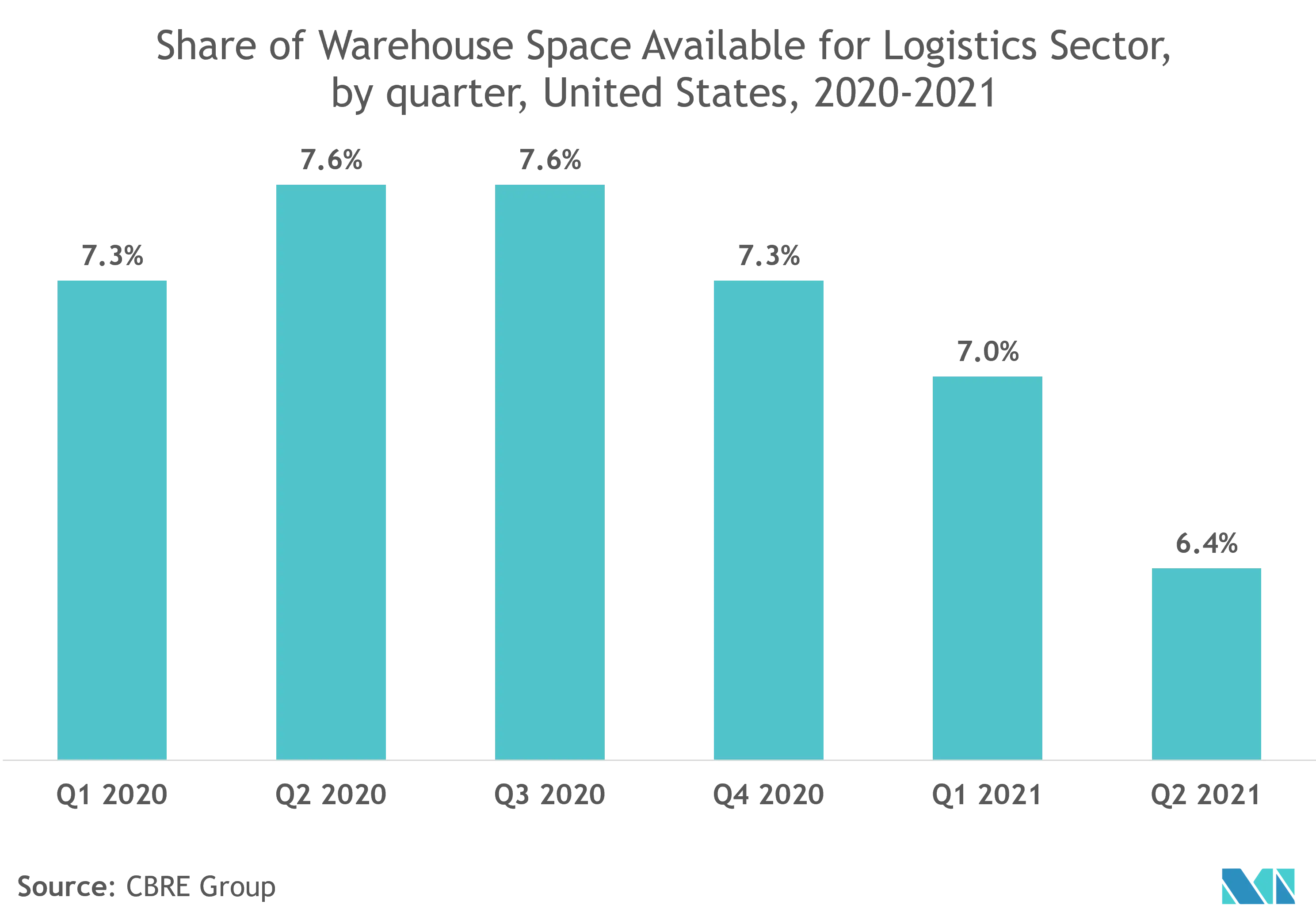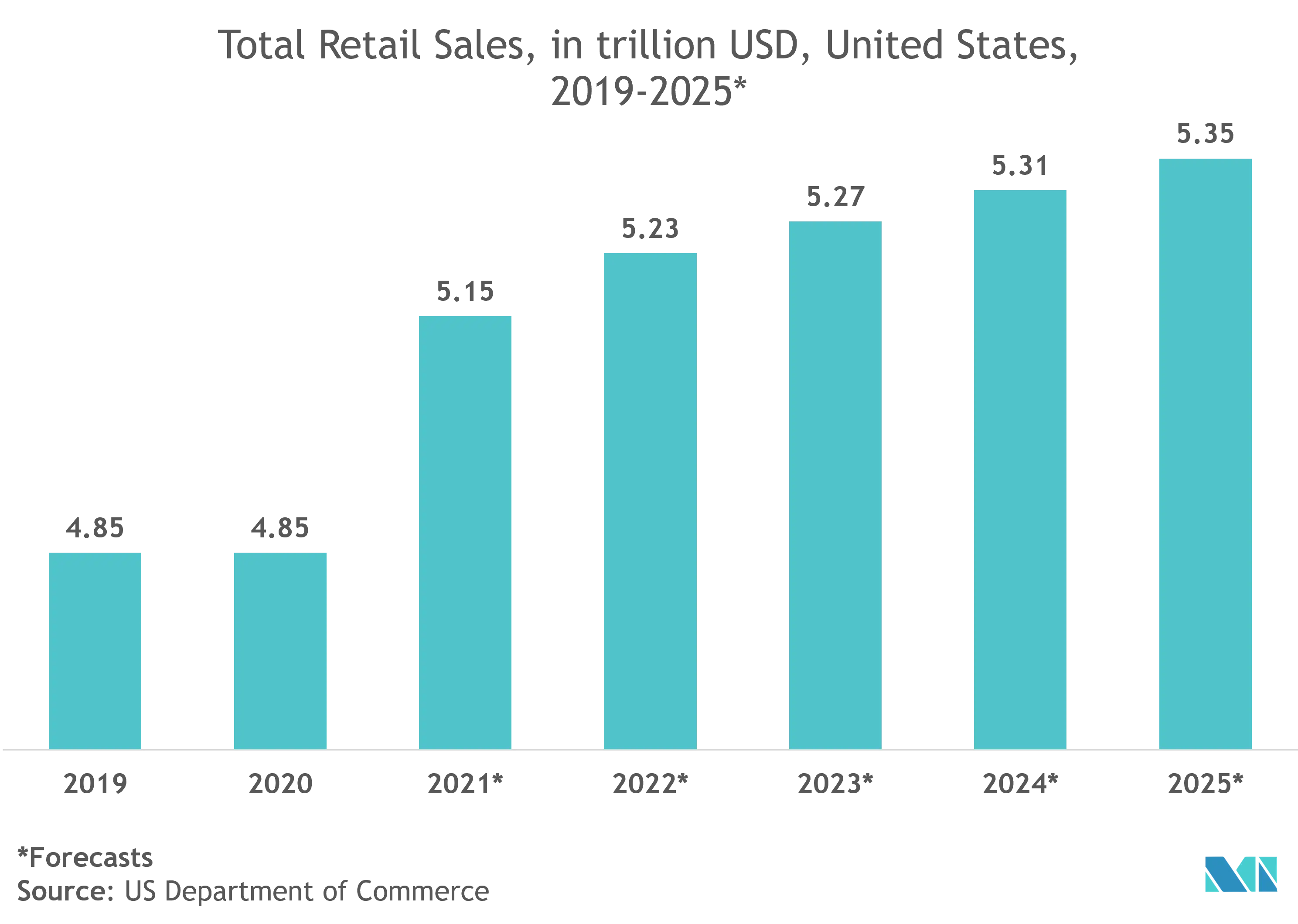Market Trends of United States Automated Material Handling Industry
This section covers the major market trends shaping the US Automated Material Handling Market according to our research experts:
Autonomous Mobile Robots (AMR) is Expected to Hold Significant Market Share
- AMRs are replacing AGVs in logistical applications. This is because, unlike AGVs, AMRs incorporate more sophisticated onboard computers that are coupled to inertial measurement units (IMU), laser scanning range finders, 2D and 3D color cameras, and motor controllers. Such AMRs do not require tracking strips to be placed in a factory or warehouse.
- Moreover, it is expected that AMRs would gradually replace forklifts in particular too. Further, Mobile Industrial Robots Inc. has taken the first initiative to design the MiR1000 AMR. It can tolerate a payload of 1000kg and equip with six laser scanners, 3D cameras, and an artificially intelligent camera.
- While many logistics operations still rely on manual and paper-based picking systems, autonomous mobile robots can now eliminate a lot of unnecessary walking. According to US Census Bureau data analysis, the average warehouse worker wastes nearly seven weeks per year in unnecessary motion, accounting for more than USD 4.3 billion in labor.
- Moreover, the North American airport industry is one of the largest airport industries in the world. It provides services to about 1,011.5 million domestic and international passengers every year. It is also home to some of the world’s biggest airports and is expected to bolster the adoption of automation to ensure no disruptions in the business model. For instance, Crisplant, a foremost global supplier of automated baggage handling systems, designed, manufactured, and installed fully automated baggage handling systems, integrated with the security screening equipment deployed by the Canadian Air Transport Security Authority (CATSA), in Canada’s Halifax International Airport.
- Further, vendors in the studied market are expanding their foothold in the region by the merger and acquisition strategy. For instance, in May 2020, Geek+ and Conveyco entered into a strategic partnership to accelerate access to AMR (Autonomous Mobile Robot) solutions in North America, especially in the United States. The demonstrated efficiency, scalability, and cost-saving of Geek+ solutions will bring significant value and enable flexible logistics for customers across industries in the region through this partnership.

Retail Industry is Expected to Hold Significant Market Share
- The significant growth of the United States retail and e-commerce sector and warehouse expansion is becoming a primary driver of market growth. Most of the region's retailers plan to automate their warehouse establishments rather than expand in a high-priced rental environment. According to the Robo Business Warehouse Automation Report, almost 80% of the United States' warehouses are still manually operated. Only 15% of all the warehouse establishments were mechanized, and not more than 5% were automated. This provides a long runway for the AMH market to grow consistently across the country over the forecast period.
- Moreover, the United States stands to be one of the major retail markets in the region. It is estimated that more than two-thirds of the country's GDP is generated from retail consumption every year. In the country's e-commerce sector, the sales growth continues to increase more than the physical stores. With automation being the key differentiating factor, there is increasing competition between online and omnichannel retailers.
- Retail is one of the major industries, wherein the requirement for automated material handling systems such as conveyors is essential. It immensely helps online retailers with the movement of goods and increases good delivery efficiency. Furthermore, retailers are increasingly investing in expanding warehouse space. For example, Blackstone Group invested USD 18.7 billion on 179 million square feet of US warehouse space to cater to the country's growing retail demand. Amazon.com Inc is another such example, adopting automation techniques to solve its warehouse growing problems. In recent years, the company has been rolling out automated material handling machines and has added many advanced conveyor technologies to its warehouses.
- Multiple companies in the region are starting fulfillment distribution centers with the growing demand from e-commerce channels. For instance, in December 2020, PFS announced its new fulfillment distribution center in the Dallas area and operated e-commerce fulfillment programs for four brands. The fulfillment centers are generally equipped with several conveyor systems to efficiently transport products, and such expansion activities are expected to impact the conveyor market in the United States positively.
- However, the outbreak of COVID-19 dented the retail sales in March, April, and May in 2020. Such factors negatively impacted the usage of automated material handling in the United States' retail landscape in those months. However, the retail sector witnessed a significant surge in late 2020, which bounced back the usage of automated systems such as AMH.


